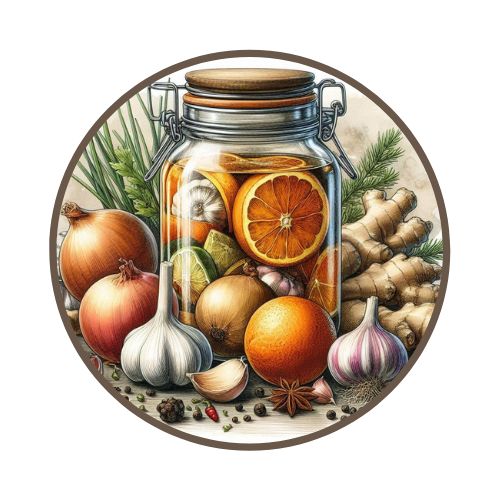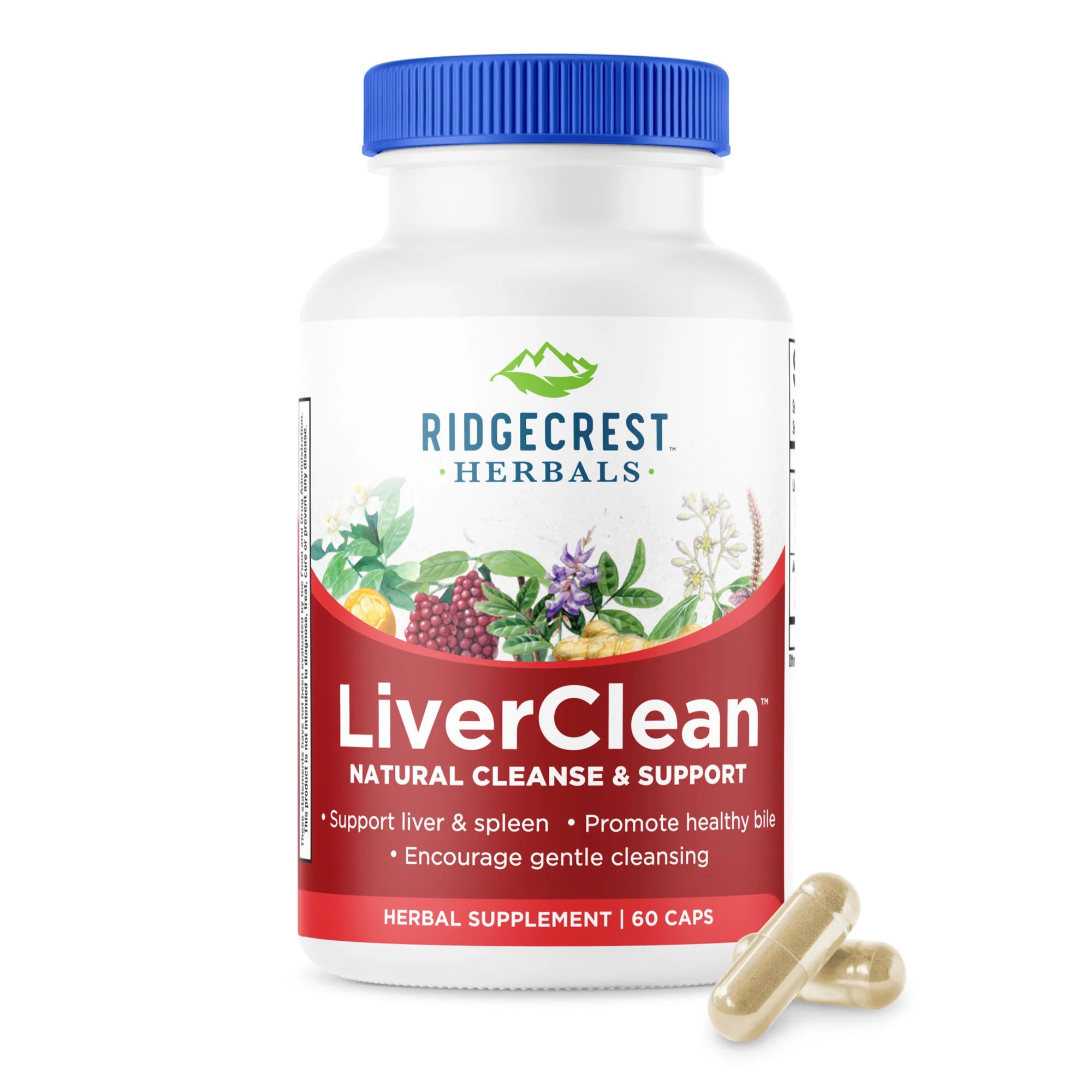As our society thankfully trends back towards natural living, once-obscure remedies are fast becoming major trends. For wintertime immune support, this is great news, because Fire Cider seems to be the latest thing on the trend watch. An invigorating tonic, Fire Cider was popularized among the herbal community in the 1980’s by Rosemary Gladstar, a well-known herbalist. Now its benefits are reaching a larger audience.
Fire Cider is a sweet, spicy, vinegary tonic that has been used traditionally for hundreds of years in Europe to help support the body’s natural immune response and invigorate digestion. It can easily be adapted to individual preferences, but the standard base ingredients are apple cider vinegar, garlic, onions, horseradish root, cayenne, ginger, turmeric, and honey. You can also add lemon, oranges, astragalus, hot peppers, adaptogenic herbs, mushrooms, and more. There are many health claims made surrounding this invigorating blend, and much evidence exists that, individually, the warming components can provide multiple benefits.
Judging by the many spicy ingredients in the recipe, you might not expect it to taste very good, however many people enjoy the spicy-yet-sweet concoction.
Because it is technically a tincture, you want to make your year’s batch of fire cider at least a month before the cold season starts. Combine all the ingredients (except the honey) in a mason jar, seal, and store, shaking occasionally, for at least a month. Strain and add the honey, then store the liquid in your fridge. One shot a day is the recommended serving.
Fire Cider is made from raw, simple, and powerful ingredients that we use to cook with every day - yet it can help keep your immune system strong during the winter months and support digestion and overall health. Just more proof that we can improve our quality of life through the foods we eat, and that the first step towards good health is powerful nutrition!
With winter approaching, we're all looking to stay healthy and not catch the illnesses going around our neighborhoods and workplaces. Before modern medicine, how did our grandparents and ancestors fight these culprits? They preventatively supplemented their diets with a fire cider! Recipes for fire ciders or "master tonics'' have been around since the 1300's, and while recipes vary by region and how they were handed down, they all consist of a vinegar base, infused with foods that contain antimicrobial properties to help our bodies heal themselves. These foods include (but are not limited to) garlic, ginger, horseradish, hot peppers, and onions. Here's a great place to start:
Ingredients:
- 1 cup fresh chopped garlic cloves
- 1 cup fresh chopped white onion, hottest onions available
- 1 cup fresh grated ginger root
- 1 cup fresh grated Horseradish root
- 1 cup fresh chopped Cayenne Peppers, or the hottest peppers available, i.e. Habanero, African Bird, or Scotch Bonnets, etc.
- 1 32oz. bottle of raw, unfiltered, non-distilled apple cider vinegar
Directions:
- Peel and mince all of your solid ingredients : and place them in a 1/2 gallon glass canning jar.
- Fill up the remaining space in the jar with apple cider vinegar, and close the lid tightly.
- Your mixture will look milky. Store in a cool, dark place for 2 weeks, shaking mixture daily.
- After 2 weeks, filter mixture through a mesh strainer or cheesecloth to remove solids, and return liquid to the jar. Continue storing in a cool, dark place when not in use.
Dosage: 1/2 to 1 ounce, two or three times daily (1-2 Tbsps. at a time), gargle and swallow. It can be used during pregnancies, is safe for children over age 4 (use smaller doses) and is non-toxic as a food.
NOTE: Fire cider isn't for everyone, and a tonic this strong could have adverse effects for people with ulcers or acid reflux. Fire cider should always be taken with food and followed with water to protect tooth enamel. Supplemental medications should always be cross-checked with your healthcare professional for safety.










Leave a comment
All comments are moderated before being published.
This site is protected by hCaptcha and the hCaptcha Privacy Policy and Terms of Service apply.